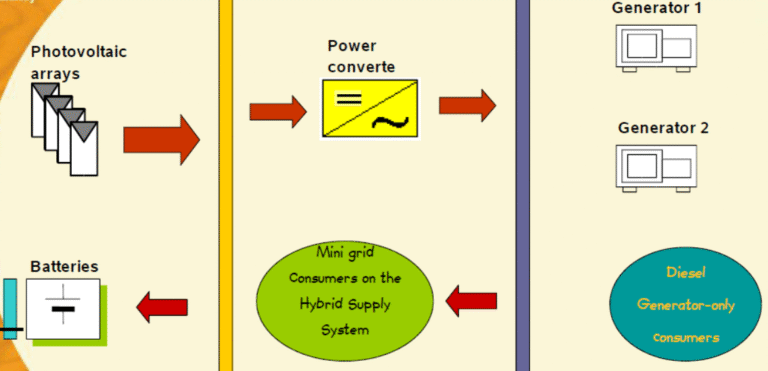🔍 What is a Solar Inverter?
A solar inverter is a critical device in any photovoltaic (PV) system. It converts the direct current (DC) electricity generated by solar panels into alternating current (AC) electricity compatible with the utility grid or household appliances.

⚙️ How Does a Solar Inverter Work?
- DC Generation
Solar panels generate electricity in DC form when exposed to sunlight. - Input to Inverter
This DC power is fed into the solar inverter. - MPPT Tracking
The inverter uses Maximum Power Point Tracking (MPPT) algorithms to ensure the panels operate at optimal voltage and current to maximize output. - DC to AC Conversion
Using power electronic components like IGBTs or MOSFETs, the inverter converts DC into pure sine wave AC. - Grid Synchronization
The inverter ensures that the AC output matches the grid’s voltage, frequency, and phase—typically 230V, 50Hz in India. - Power Export or Usage
The AC power is:- Used for local consumption
- Exported to the grid (in grid-tied systems)
- Stored in batteries (in hybrid/off-grid systems)
🔌 Types of Solar Inverters
| Type | Application |
|---|---|
| String Inverter | Common in rooftop & small commercial systems |
| Central Inverter | Large utility-scale solar plants |
| Microinverter | Module-level DC to AC conversion |
| Hybrid Inverter | Supports battery backup + grid + solar |
📲 Features of Modern Solar Inverters
- MPPT (Maximum Power Point Tracking)
- Anti-Islanding Protection
- Remote Monitoring (via Wi-Fi or RS-485)
- Reactive Power Control
- Grid Compliance (as per DISCOM/CEA standards)
🛠️ Why Solar Inverters are Critical
- Enable grid connectivity
- Ensure electrical safety
- Maximize solar power output
- Manage energy flow (especially in hybrid systems)
📉 Efficiency of Solar Inverters
- Conversion Efficiency: Typically between 96% to 99%
- Factors Affecting Efficiency:
- Ambient temperature
- Panel mismatch
- Inverter loading
- Aging of components
✅ Key Advantages
- Real-time power data and diagnostics
- Protection against overloads and faults
- Long-term durability (10–15 years typical lifespan)

📌 Conclusion
The solar inverter is the brain of a PV system, intelligently managing energy conversion, system performance, and safety. Whether you’re installing a rooftop system or operating a solar farm, understanding how inverters work is key to optimizing solar output.


